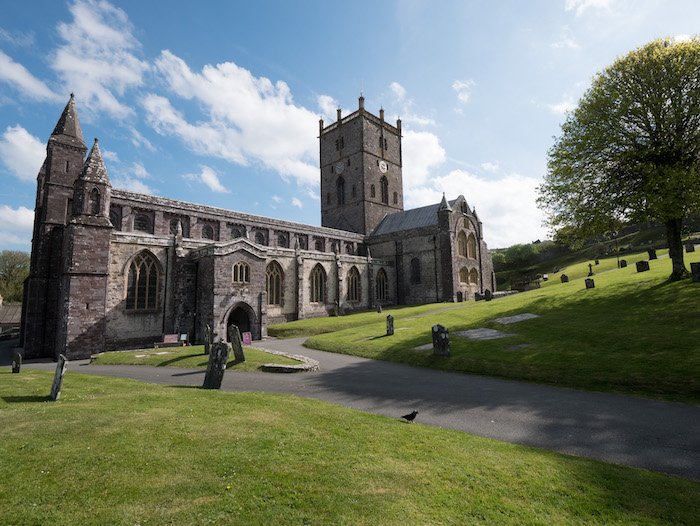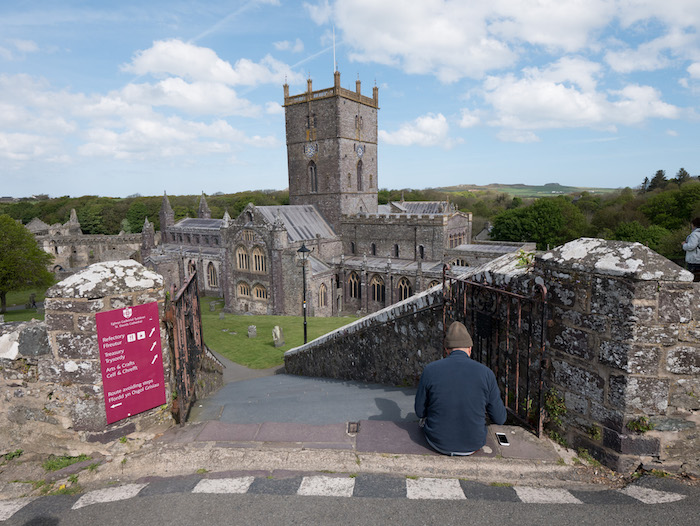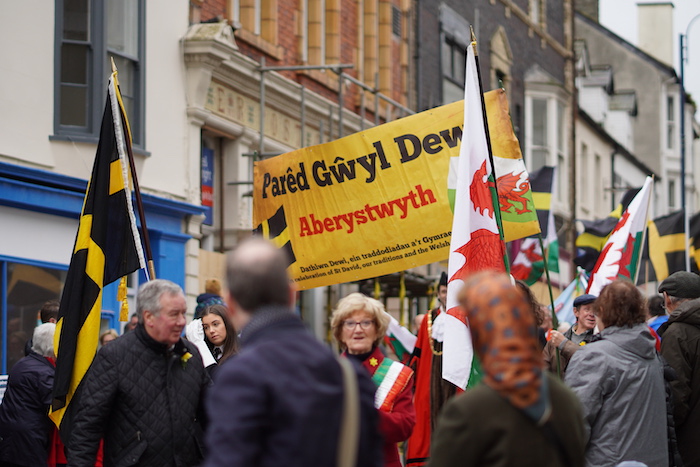St. David’s Day, celebrated every year on March 1st, is a day of national pride for the Welsh, much like Independence Day for the Americans.
Though the original significance of Dydd Gŵyl Dewi Sant circulates around the life and miracles of 6th century patron saint David, it has come to represent much more. It is a reflection of Welsh pride in their culture, language, and traditions. It is a day on which the Welsh celebrate the love they have for their country and their diversity from the rest of the British Isles. With the shining example of St. David at their backs, Welsh people, on this day, show the rest of the world what it truly means to be a Cymro (Welsh man) / Cymraes (Welsh woman).
How do you say Happy St. David’s Day in Welsh?
The way you would say Happy St. David’s Day! in the Welsh language is Dydd Gŵyl Dewi Sant Hapus! Listen to the recording below for the correct pronunciation!
Who was St. David / Dewi Sant?
St. David, or Dewi Sant as he is known in Welsh, was a Welsh Bishop who lived during the 6th century A.D. In religious imagery, he is often depicted with a white dove perched upon his shoulder.
While many legends surround this patron saint, very few facts are actually known about him. It is very probable, according to the Annales Cambriae, that St. David was born in Henvynyw in Cardiganshire, and that he presided over both the synod (religious assembly) of Brevi and Lucus Victoriae. That he was bishop of Menevia, later known as St. David’s, is also accepted as historical fact. We also know that he was made a saint by Pope Callistus II in 1120.
Everything else we know about St. David was obtained mostly from the writings of Rhygyfarch, who lived 500 years after St. David’s death. Rhygyfarch significantly altered, and probably even fabricated much of the saint’s story as a way of keeping the Welsh church separate from Canterbury in England.
Be that as it may, the Welsh continue to revere him as a national hero. Indeed, legend is often far more alluring than fact!

The Legend of St. David according to Rhygyfarch
Rhygyfarch’s writings on the life of St. David are far from credible, but the legend he produced was essentially the springboard for all modern day festivities surrounding the saint.
According to Rhygyfarch, St. David was born to St. Non, a nun and a tribesman’s daughter after she was raped by Sant, the son of the prince of Ceredigion. It is said that the birth took place upon a hilltop during a violent storm, where the Chapel of St. Non stands today. Legend also has it that an angel had predicted St. David’s birth thirty years before it occurred.
St. David’s early life was spent studying the Holy Scripture, first under St. Illtyd at Caerworgorn, and then under St. Paulinus. Upon completing his education, he became a travelling monk who established and restored twelve monasteries across Wales, Dumnonia and Brittany. He managed to convert many pagans to the Christian faith during this travels, and soon founded his own monastery at ‘Glyn Rhosyn’ in Pembrokeshire.
Life at the ‘Glyn Rhosyn’ monastery was extremely arduous for the monks residing there. The men were only allowed to consume bread with herbs, vegetables, milk and water. Indeed, St. David himself only ever drank water, giving him the name ‘Dewi Ddyfrwr’ (David the water drinker).
They were forced to pull their own ploughs without the help of animals, and were obliged to pray constantly throughout the day. Moreover, the monks were not permitted to speak amongst themselves unless in an emergency. It is thus not difficult to imagine that some monks were bitter about their austere lifestyle.
On one occasion, a group attempted to poison St. David’s food, a plot which was foiled when St. David blessed the food and ate it without coming to any harm. It was following this incident that David went on a pilgrimage to Jerusalem, where the Patriarch anointed him Archbishop.
The above is not the only miracle St. David is said to have performed. In more than one account, David is said to have healed the blind – the first at his baptism where the blessed water was used to bestow sight upon a blind man, and the second, when he healed his blind teacher, St. Paulinus, by making the sign of the cross. It is also said he raised a widow’s son from the dead.
However, the most famous tale of St. David’s miracle-working originates at the synod of Brevi. It is said that St. David preached so loudly that the ground below him rose into a hill so all could see him.
St. David passed away on March 1st when he was over 100 years of age, apparently surrounded by angels who would take his soul to Heaven. Some texts even state that he lived to be 147, and that he had predicted the date of his death a week in advance.
At his final sermon, he called upon the monks to “do the little things” (gwneud y pethau bychain), an expression which remains inspirational to the Welsh people even today.
St. David was buried at his monastery, which is now the site of St. David’s Cathedral. It was also the destination of many pilgrimages during the Middle Ages.

How do the Welsh celebrate St. David’s Day?
St. David’s Day celebrations are no longer limited to the day itself. In recent years, festivities continue throughout the entire week, with the largest cities such as Cardiff and Swansea holding concerts, parades, music festivals, and sporting/cultural events. Male choirs are particularly popular during this period. For those with strong religious convictions, a visit to the local chapel or church is also customary.
Young children dress up in traditional Welsh costumes. While girls wear an adorable Welsh flannel petticoat and overcoat, with a beaver hat and white bonnet, the boys don “a jabbot and wrist frills, a Welsh flannel waistcoat, black breeches, long woollen socks and black shoes.” (Rhys James Jones) These children take part in an outdoor parade led by the Mayor and town dignitaries.

Older children and teenagers often participate in the Eisteddfod, a competition in which students sing, dance and perform to win prizes.
One meal the Welsh cannot do without on St. David’s Day is a dish called cawl – a delicious stew of lamb and leeks. Adults may also indulge in a locally brewed St. David’s Day ale, a surprising addition to the festivities since St. David himself abstained from all alcohol consumption!
The Significance of St. David’s Leek
We may have English poet Michael Drayton to thank for the story of the Welsh who won a war against the Saxons with the help of the simple leek.
It is said that King Cadwaladr of Gwynedd (and some say even St. David himself) requested that his soldiers wear a leek in their helmets to distinguish themselves from the Saxons, who were dressed similarly to the Welsh. Doing so would stop the Welsh from killing their own soldiers, thereby ensuring victory.
The leek as an adornment in battle also appears in Shakespeare’s play Henry V, in which the Welsh character Fluelleu states: “If your majesties is remembered of it, the Welshmen did good service in a garden where leeks did grow, wearing leeks in their Monmouth caps, which, your majesty know, to this hour is an honourable badge of the service, and I do believe your majesty takes no scorn to wear the leek upon St. Tavy’s Day”
Moreover, the daffodil, which is now as much a Welsh emblem as the leek itself, is considered a strain of leek, according to the Welsh language. Indeed, they use the term “Peter’s Leek” (Cenhinen Pedr) to describe the yellow flower.

How will you be celebrating St. David’s Day this year? I would love to hear about your family traditions!

